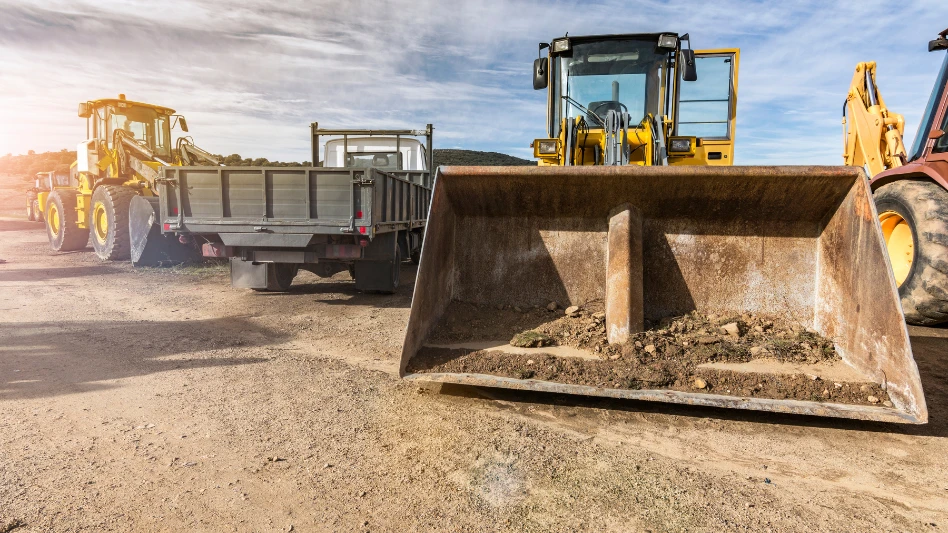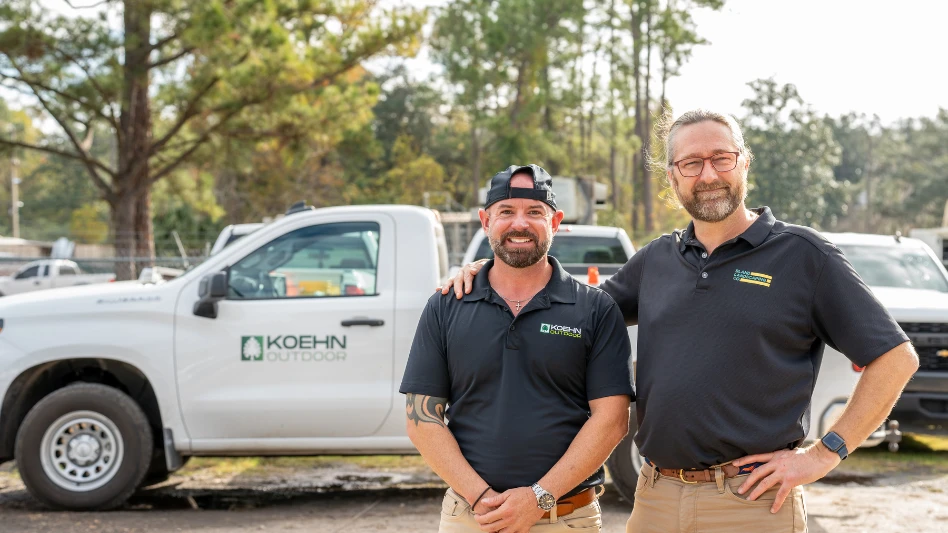 scagAs forecasts predicted, 2009 was a tough year for landscape contractors and the heavy equipment industry. Depending greatly on increased consumer spending, new home starts and infrastructure improvements, contractors and the manufacturers who supply them with equipment like skid-steer loaders, telescopic handlers, backhoes and excavators have felt the pinch more than just about any other economic sector.
scagAs forecasts predicted, 2009 was a tough year for landscape contractors and the heavy equipment industry. Depending greatly on increased consumer spending, new home starts and infrastructure improvements, contractors and the manufacturers who supply them with equipment like skid-steer loaders, telescopic handlers, backhoes and excavators have felt the pinch more than just about any other economic sector.
While the economy is now showing signs of life, many contractors are continuing to play it safe by reducing overhead, scaling back on employees and being very conservative when it comes to new equipment purchases.
Mike Werner, vice president of customer support operations at heavy equipment manufacturer’s JCB North American headquarters in Savannah, Ga., has seen evidence of this scenario first-hand.
“For a number of reasons, many contractors are holding on to their equipment longer in today’s market,” Werner says. “Over the past year or so, the credit crunch has made it a challenge to secure financing for projects. Customers may not have the money to spend on improvements to their properties. This leads to lighter workloads and machines that aren’t getting used nearly as much.”
Within the heavy equipment industry, machine life is measured in two primary ways: years old and service hours. In most cases, the service hours measurement is a more accurate indicator of the amount of wear a machine has experienced. However, the number of years a machine has been around does have an effect on its residual value.
While some contractors keep a machine three to five years, or around 5,000 to 8,000 service hours, others have made it a standard practice to turn in machines at three years or 3,000 hours to get a higher resale or trade-in value. Now, those same contractors are keeping their equipment longer because they simply can’t afford to sell them.
| Maintenance tips Chris Powell, field manager of commercial engine support for Briggs & Stratton Commercial Power, provides a short list of engine maintenance musts:
|
At Your Service
As expected, keeping an older machine on the job may save money, but it also offers up its own challenges. Many owner-operators perform their own maintenance work – oil changes, daily greasing, checking fluid levels and inspecting the axles – while letting their dealers handle the actual servicing of the machine. However, the fact that owners are holding onto their equipment for longer periods of time brings up service issues with which they may not be familiar, having traded in their equipment long before it required service in the past.
“Owners who used to trade in their machines often need to be aware of the importance of additional servicing at their local dealer after their equipment is over three years old or so,” Werner says. “They may have never had to have their powertrain, transmission or axles serviced. Hydraulic relief valves should also be checked for pressure. Brake pads and tires typically need to be replaced after a few years of steady use, and gauges should also be monitored for accuracy.”
While regular dealer servicing is extremely important, Werner says older machines can benefit greatly from a few additional maintenance activities that contractors can handle on their own. Some of these activities include regularly inspecting for hose damage, hydraulic leaks, tire wear and pins and bushings that need grease. Cylinder rods should also be greased and checked for damage.
“The damage incurred by not maintaining hoses, tires and hydraulic leaks will eventually lead to one thing that most owners cannot afford right now, and that’s downtime,” Werner said. “If a hose blows in the middle of a job, that job is at a standstill until the machine can be repaired. That means operators and laborers will be sitting around waiting to start back up, and they need to be paid regardless.”
There’s another obvious repercussion of overlooking important maintenance and service work – huge repair bills. Letting equipment components wear prematurely by simply not changing the oil or greasing pins and bushings can shorten the components’ wear life by as much as 50 percent. This negligence can lead to service bills that are twice as large, or the need to repair or replace parts in half the usual amount of time.
|
On the smaller side Landscape contractors need reliable equipment. If your equipment doesn’t have efficient, dependable engines, you’re dead in the water right from the start. But how should you know when to repair the engine, repower with a new engine, or replace the machine entirely? “Contractors should base this decision on the total cost of engine repairs they’ve had on an existing machine during a one-year span,” says Chris Powell, field manager of commercial engine support for Briggs & Stratton Commercial Power. “If the total cost of engine repairs is more than 25 to 40 percent of the cost of the engine, the engine is likely wearing and not as efficient. It’s time to repower with a new engine.” Powell adds that as an engine wears and uses more oil, hydrocarbons and carbon monoxides increase. Repowering the machine with a newer grade, air-cooled engine not only runs cooler, it reduces the environmental impact as technologically advanced engines produce fewer emissions. By adding a new engine to a commercial mower, contractors can receive the benefit of increased fuel efficiency, reduced emissions and a new engine warranty. Whether a landscape contractor is working to maintain an existing engine, or thinking of repowering with a new engine, regular engine maintenance increases the longevity of the machine. Performing a simple tune-up – replacing oil, spark plugs and the appropriate filters – can reduce emissions by up to 50 percent and preserve the life of the mower. Engine maintenance is an important step to an efficient engine, but Powell says the number one issue with any engine with high usage hours is oil consumption. Dealers can assist contractors by performing a simple leak down test on any engine to help quickly evaluate the potential of that engine. “In today’s economy, you have to get the best bang for your buck,” says Powell. If you have a piece of equipment that is in good shape, with normal maintenance repairs it could run another couple of years. Adding nice, fresh power with a fresh warranty is much less expensive than replacing the entire machine and provides new engine reliability.” |

Explore the January 2010 Issue
Check out more from this issue and find your next story to read.
Latest from Lawn & Landscape
- Analysis of an entrepreneur
- Terra Nova's Sedum Conga Line variety wins Best of 2024 Perennial award
- Different ways to distribute
- Case's 580EV electric backhoe loader wins Good Design Award
- Davey Tree promotes Dan Herms to VP, GM of Davey Institute
- Caterpillar's Cheryl H. Johnson set for April retirement
- Registration open for sixth annual Lawn & Landscape Technology Conference
- 12 interview questions to help you hire winners





